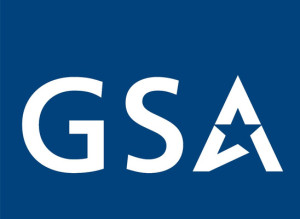 Exclusive
Exclusive How one outgoing CIO wants to be a Yoda for small agency IT modernization efforts
Kirit Amin, the outgoing CIO of the International Trade Commission, said OMB and GSA should provide an easier way for small agencies to move off legacy systems.
When it comes to modernizing federal IT, there are Jedis and there are Yodas. Kirit Amin, after a decade in government and almost 45 years in the federal community, likes to think of himself as a Yoda — someone who can train the next generation.
And there is no part of the federal community that needs some help from these Yodas more than small and micro agencies when it comes to IT modernization.
Amin, who announced he is leaving federal service on Jan. 6 after spending the last three years as the chief information officer of the International Trade Commission, said he plans to stay involved in the federal community and be an advocate for small and micro agencies.
Amin saw the challenges small and micro agencies have when he first arrived at the ITC.
“When I came to ITC it was kind of a surprise to me after being in the federal sector for so long, I never realized the small and independent agencies and what situation they were in,” Amin said on Ask the CIO. “Lots of times, they are below the radar. The Office of Management and Budget doesn’t have resources to look after them. And these agencies, kind of think, they do not have to, for example, comply with mandates or statutory requirements. When I first came here, they thought the Trusted Internet Connections or Homeland Security Presidential Directive-12 are mandates they didn’t have to do, which was kind of a shock to me.”

He also said he was surprised by how OMB and other oversight bodies seemed to let small and independent agencies fly under the radar.
Amin said while he knows there are 90-plus small and micro agencies and every situation is different, it was clear these agencies needed some help in addressing cybersecurity and legacy system challenges.
This is why Amin got involved with ACT-IAC, an industry association, and worked on a small and independent agency guide to IT modernization. ACT-IAC released the best practices guide in November.
Through that effort, Amin said models emerged that the Office of Management and Budget and the General Services Administration could follow to give small and independent agencies help in moving off of old technology.
Amin said the continuous diagnostics and mitigation (CDM) cyber program is one such example. He said with OMB getting a centralized fund from Congress, the Homeland Security Department running the operational side and GSA providing the acquisition support, small and micro agencies have an easier time improving their cyber postures.
“Technology moves at lightning speed and these small agencies have, if you look at people, process and technology, challenges across all three, and not to mention budgetary is the bigger challenge,” he said. “Let’s talk about going to cloud. All of us want to go to cloud. Why can’t there be a single contract, led by GSA and be a multi-tenant approach, where all of us just go and get our email to the cloud so we don’t each have to have our own independent procurements, which is what we are struggling with.”
ITC is experiencing this challenge today. Amin said he is taking the agency’s email to the cloud, but because of the number of seats he needs, it’s difficult to get vendors to bid on the solicitation.
Amin said another easy win would be around data centers. At ITC, he is trying to move to a private sector provider, but he’d rather go to a larger agency, which have extra capacity.
“I need less than 10 rack spaces, for example,” he said. “It’s not only the hosting, but we would be able to share the TIC, which is a tremendous cost for us. We went from a standard Internet connection to the [TIC] which increased the cost by 10-fold overnight. But it’s a mandate and we are doing them. We can share the TIC and that reduces overall government cost, and larger agencies get kudos for data center optimization.”
Amin said all commoditized IT should be provided to agencies as a service. He said no matter the size of the agency, the government can no longer afford to run its own commodity IT infrastructure.
“The other part that the small agency leadership has to understand, there is a huge difference between costs and investments. Please do not look at these as costs. These are investments, which have return on investments as we go forward,” he said. “Another thing that going to as-a-service provides is an operational expenditure (opex) model versus capital expenditure (capex) model. We are not going to have capital investments available every three or four years to refresh this unless we go to the cloud and as-a-service and it becomes an opex model.”
Amin said the collective power of the small agencies could be something vendors could be interested in versus each one of them by themselves.
GSA demonstrated this approach with reverse auctions for laptops and desktops several times over the last year.
Amin said this same approach could work for commodity IT services as well.
“GSA is clearly now on the wave length and they have listened. I think we are on the right path,” he said. “This is where I’m not retiring. I want to work with whomever to make sure we, in the small agencies, get the services and resources we need.”
Amin said he will work through the industry associations such as ACT-IAC or AFFIRM, as well as with agencies and lawmakers to address these IT modernization challenges.
“I want to make sure I continue in my passion for the federal IT community and I feel I owe it back,” he said.
Copyright © 2025 Federal News Network. All rights reserved. This website is not intended for users located within the European Economic Area.
Jason Miller is executive editor of Federal News Network and directs news coverage on the people, policy and programs of the federal government.
Follow @jmillerWFED
Related Stories

‘Technology refreshment’ a healthy alternative for agencies struggling with IT modernization stress





